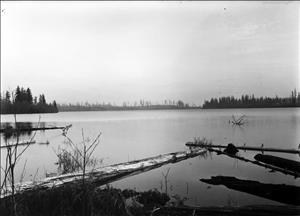On August 7, 1927, water from the large storage reservoir developed by the Seattle Water Department at Lake Youngs (formerly Swan Lake) reaches Seattle homes for the first time, alleviating a shortage caused by heavy summertime use. Named for longtime Water Department head L. B. Youngs (1860-1923), the reservoir is located between Maple Valley and Renton along the route of the pipelines carrying water from the Cedar River to Seattle. The first use of Lake Youngs water follows more than a decade of planning and construction.
In 1916, Water Superintendent Youngs and City Engineer A. H. Dimock recommended creating a storage reservoir and impounding basin at what was then called Swan Lake. By connecting the Cedar River pipelines to a Swan Lake reservoir, the department could store surplus water during heavy winter flows for use when high summertime demand exceeded the flow from the river. The reservoir would also provide an emergency backup in case the supply pipes broke (as they had on several occasions, most notably in November 1911).
Condemnation of the land that would be inundated by enlarging the lake to create the reservoir began in 1917, but it was several more years before construction got under way. Originally, the one-mile wide, two-mile long Swan Lake covered 548 acres. In 1921, two dams were built, one at the south end and one at the east end. The dams raised water levels by 20 feet, causing the lake to expand to 790 acres. The same year, work began on Cedar River Pipeline Number Three from the Cedar River intake at Landsburg to standpipes and reservoirs in Seattle, with planned connections to the new reservoir and its control works at Molasses Creek.
Lake Youngs
On June 10, 1923, L. B. Youngs died. In recognition of his 28 years of service with the Water Department, City officials asked that Swan Lake be renamed Lake Youngs. On October 23, 1923, the first water delivered by Pipeline Number Three reached Seattle.
Not until April 1, 1926, was construction completed on the Lake Youngs reservoir development, which included an intake at the lake with a tunnel leading two miles to the control works at Molasses Creek, from which the three Cedar River pipelines would continue to the city. Another 16 months passed before water from Lake Youngs was used for the first time on August 7, 1927, helping to replenish in-city reservoirs, which had dropped to 48 percent of their capacity during a prolonged dry spell during which average daily consumption reached 86 million gallons, setting a new record.
In 1928, Cedar River pipelines One and Two were diverted into Lake Youngs, and all three pipelines into the city were supplied from the Molasses Lake control works. The next summer, many customers noticed a funky taste in the water. The department's annual report recounted, "We had considerable complaint about the palatability of the water, due to high temperature" (1929 Annual Report). Heavy usage had lowered the level of the lake, which increased water temperature.
Dikes were constructed around the lake, and soil was removed from the shores, easing some complaints. The department also constructed a bypass pipeline that allowed it to bring Cedar River water directly to the Molasses Creek control works when utilizing Lake Youngs would create palatability problems.

